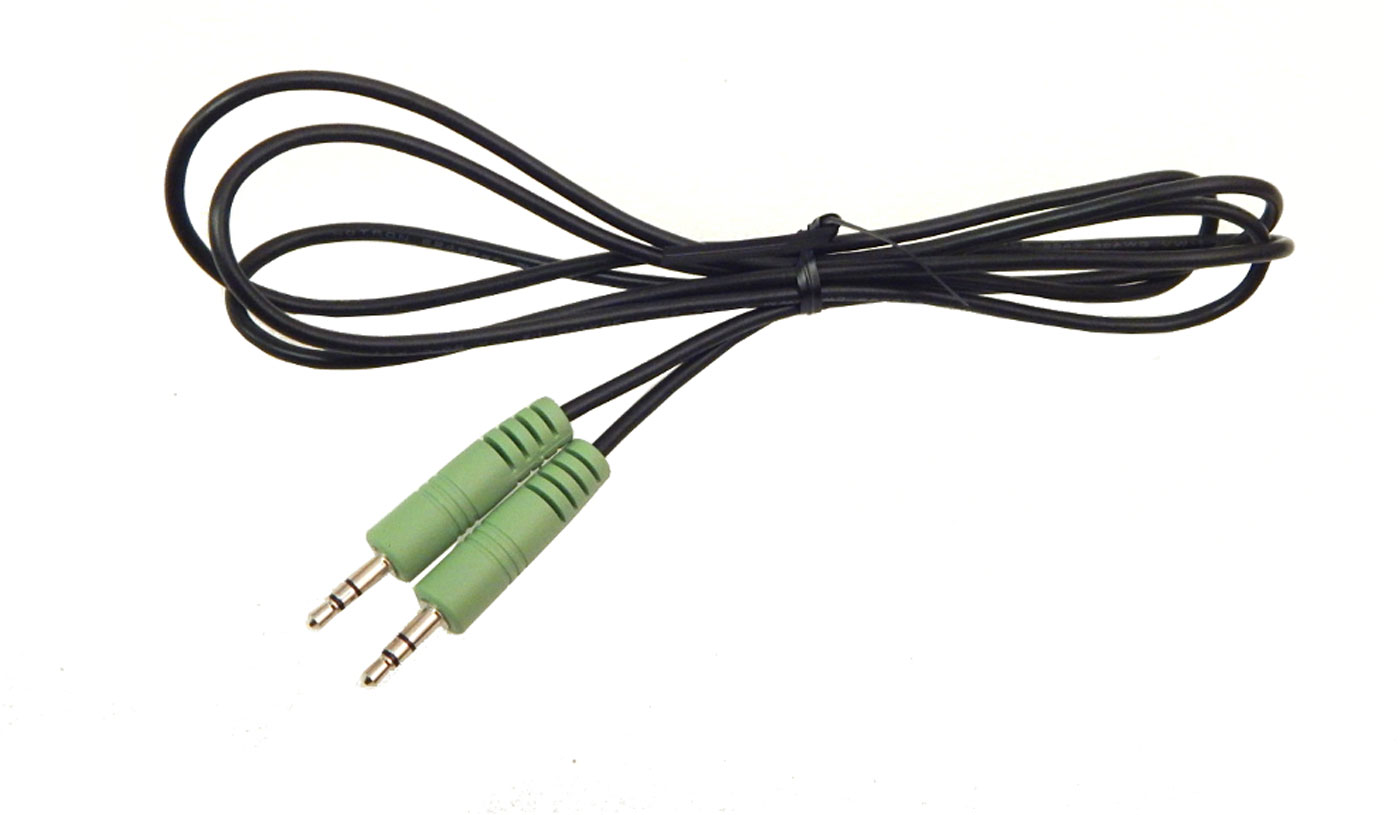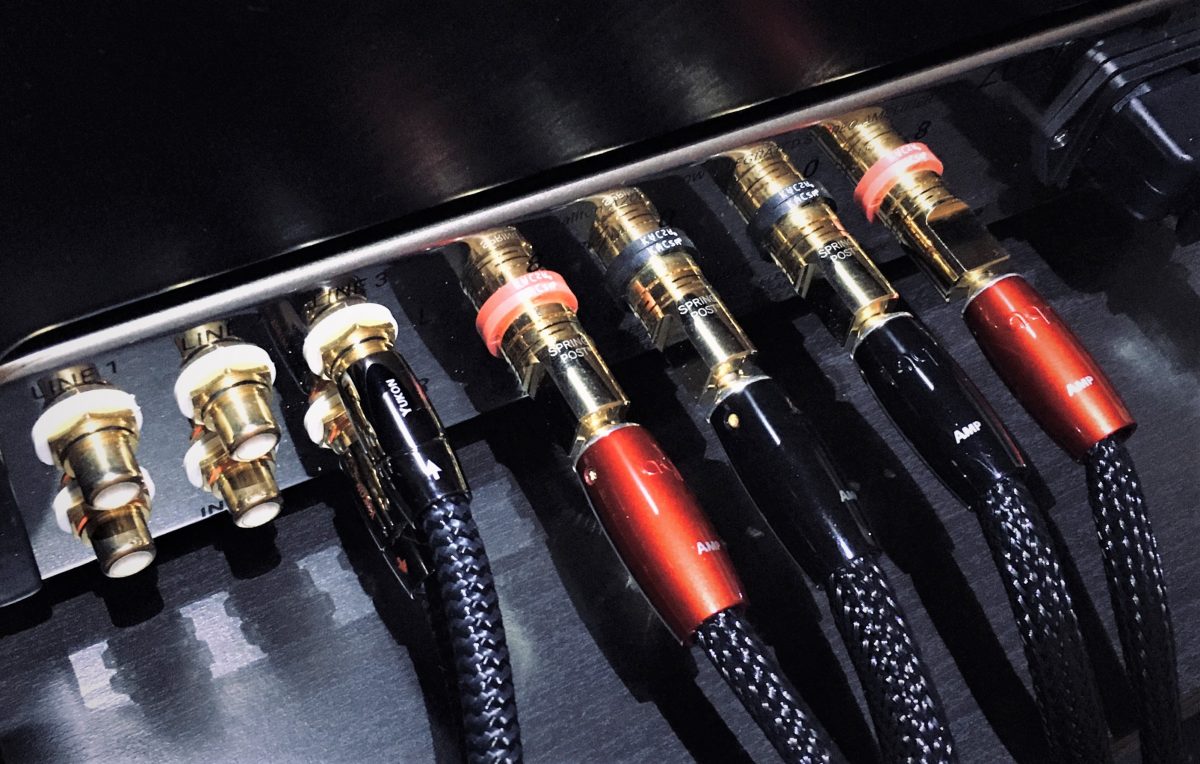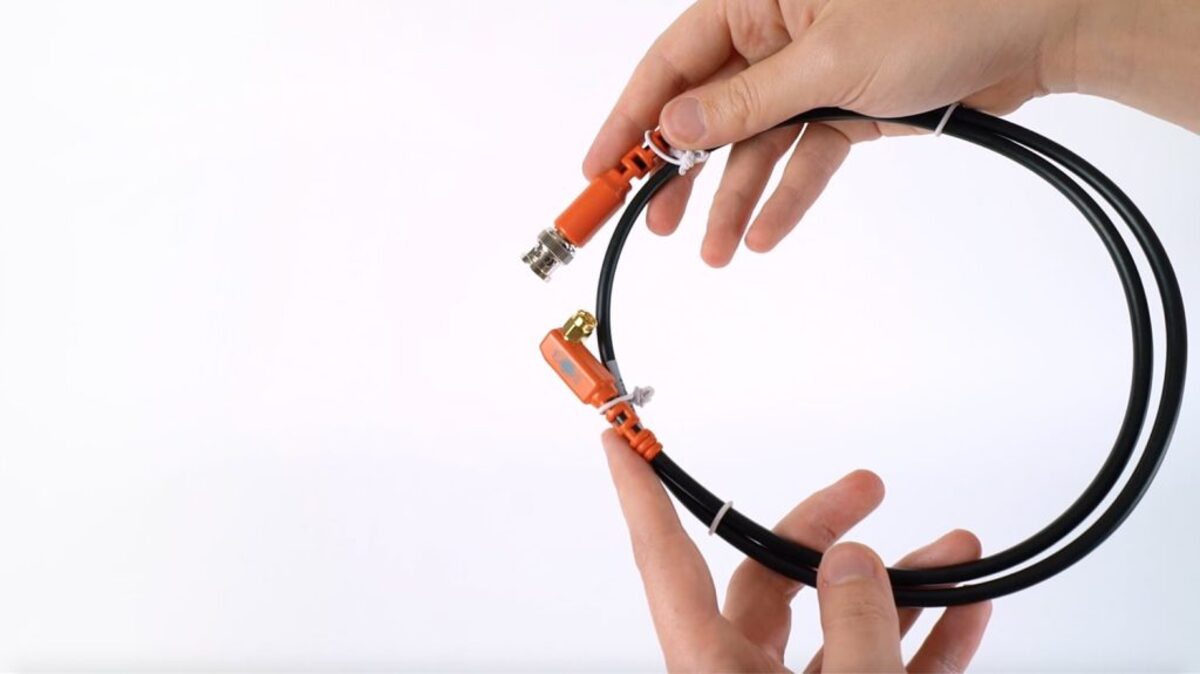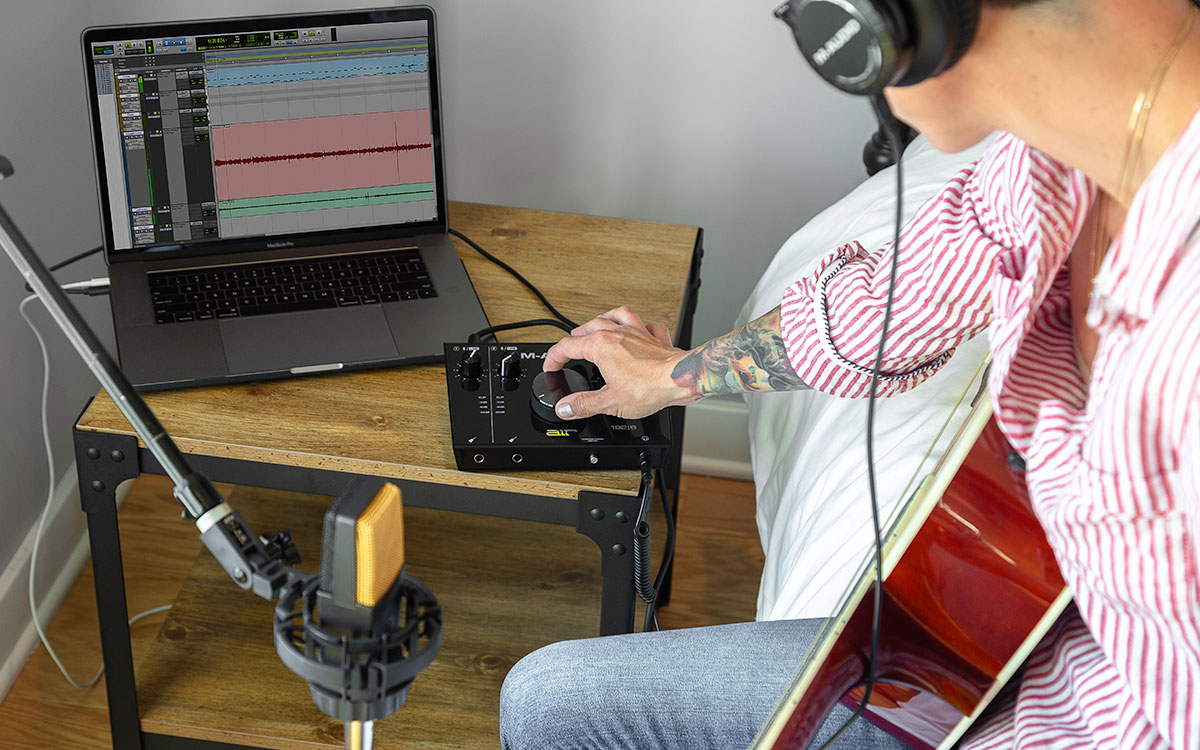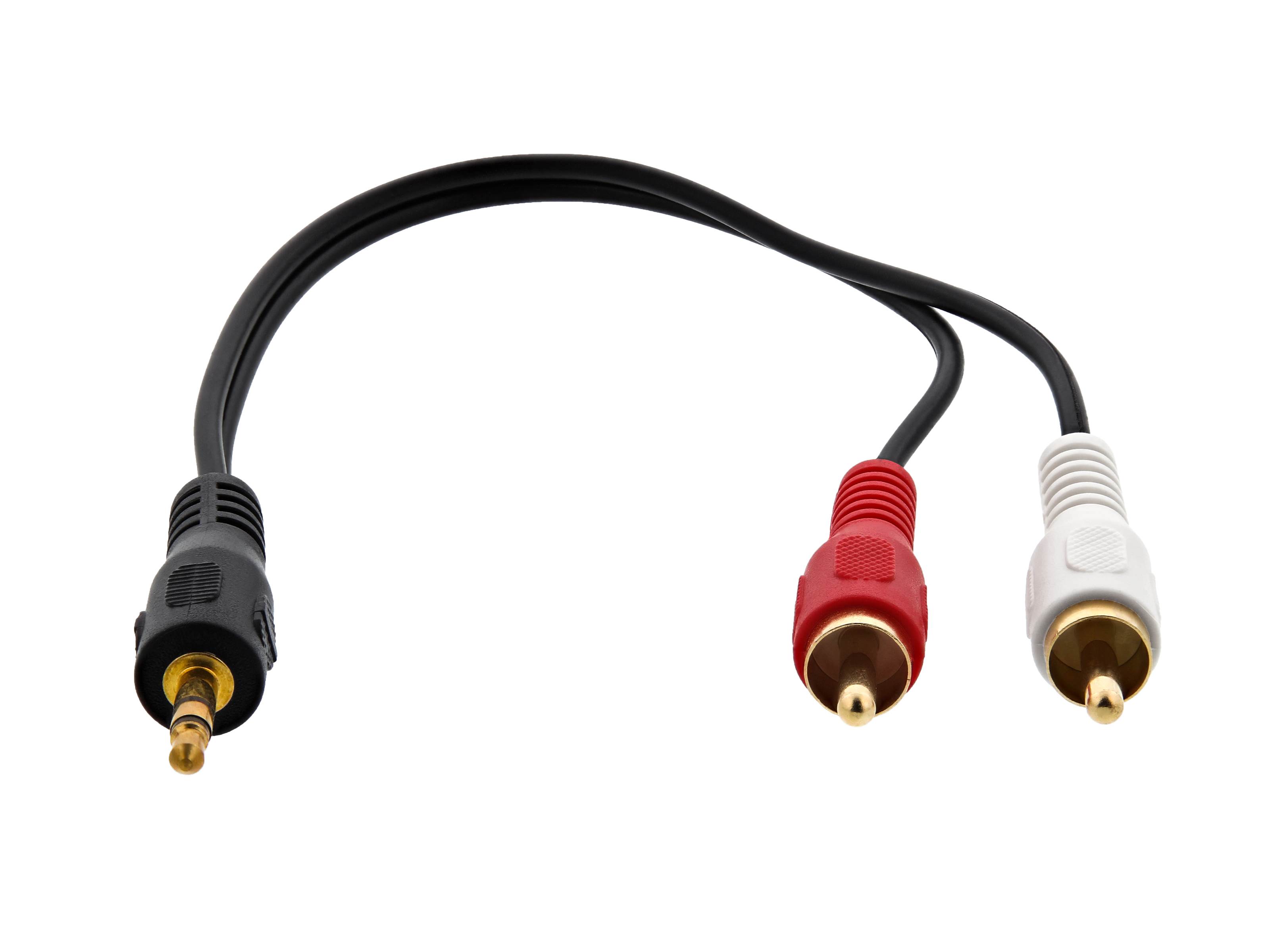Home>Production & Technology>Audio Cable>What Makes A Good Audio Cable
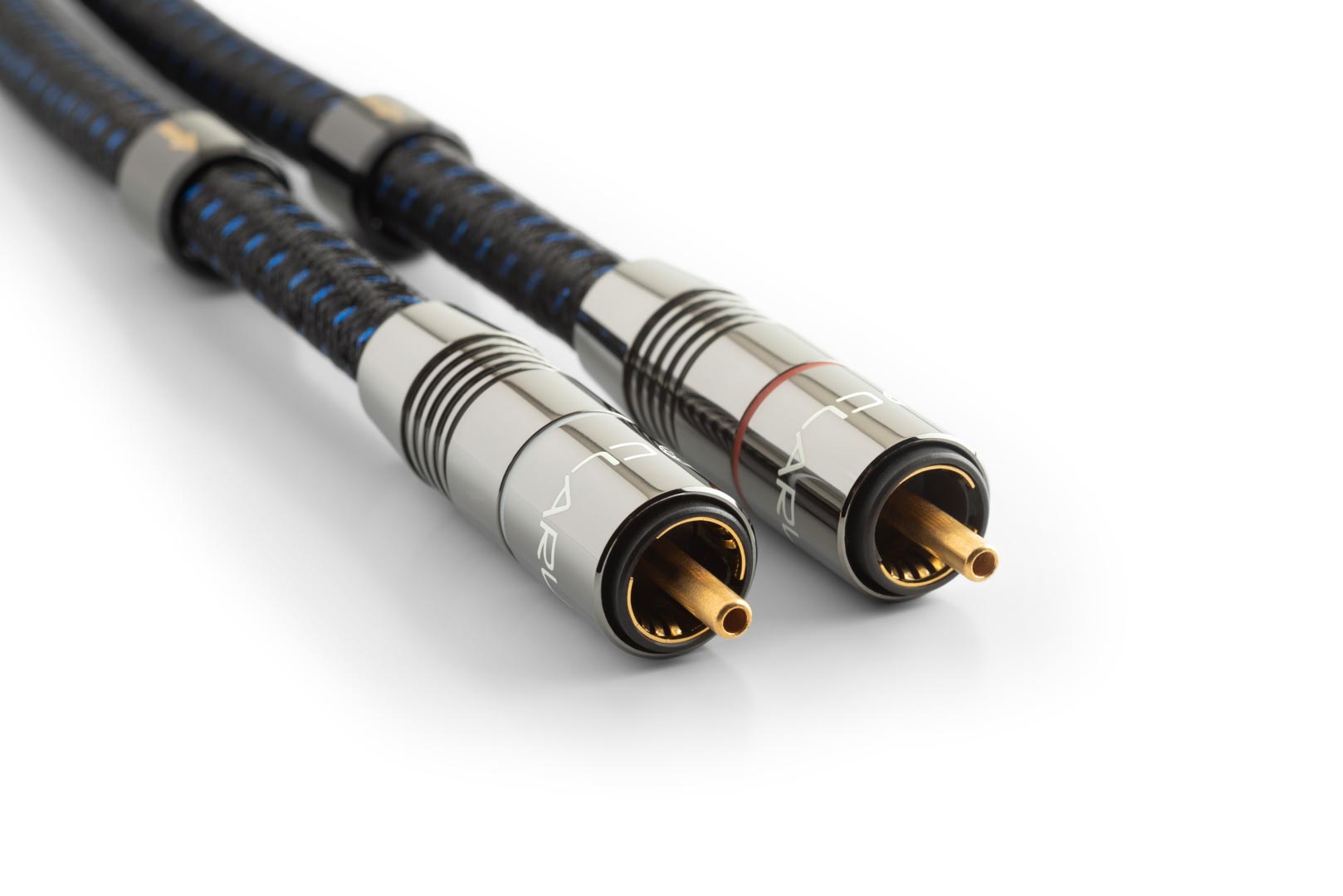

Audio Cable
What Makes A Good Audio Cable
Published: December 21, 2023
Discover the key factors that make an audio cable exceptional. Learn how to choose the perfect audio cable for your sound system and improve your listening experience.
(Many of the links in this article redirect to a specific reviewed product. Your purchase of these products through affiliate links helps to generate commission for AudioLover.com, at no extra cost. Learn more)
Table of Contents
Introduction
Audio cables are an essential component of any audio system, whether it’s a home theater setup, a recording studio, or even a simple pair of headphones. These cables play a crucial role in transmitting audio signals from one device to another, ensuring high-quality sound reproduction.
While audio cables may seem like mundane accessories, their importance should not be underestimated. The quality of the cables you use can significantly impact the overall sound performance of your audio system. Investing in good audio cables can make a noticeable difference in audio clarity, dynamics, and overall listening experience.
In this article, we will explore the key factors that distinguish a good audio cable from an average one. We will delve into the importance of conductivity and material quality, the significance of shielding and interference reduction, the role of connectors and durability, the impact of cable length on signal loss, as well as the relationship between price and value. By understanding these aspects, you will be equipped with the knowledge to make informed decisions when selecting audio cables for your specific needs.
Before we dive deeper into these factors, it’s essential to note that different audio applications may require different types of cables. For example, a high-end studio recording setup may demand specialized cables to cater to the complex audio signals and maintain pristine quality. On the other hand, a casual home audio system may benefit from more affordable yet reliable cables that still deliver excellent performance.
Now that we have set the stage, let’s explore the characteristics that make a good audio cable stand out from the rest.
Importance of Audio Cables
Audio cables are the lifeline of any audio system, as they carry the audio signal from the source device to the output device, ensuring accurate and faithful reproduction of sound. The quality of the audio cables directly affects the clarity, fidelity, and overall performance of the audio signal.
One of the primary reasons why audio cables are crucial is their impact on signal integrity. A good quality audio cable will faithfully transmit the audio signal without any degradation or loss, resulting in cleaner, more detailed sound reproduction. On the other hand, poor quality cables can introduce signal loss, distortion, and noise, negatively impacting the audio quality.
Moreover, audio cables also play a vital role in controlling interference. Electrical interference, such as electromagnetic interference (EMI) and radio frequency interference (RFI), can degrade the audio signal and cause unwanted noise or distortion. Quality audio cables are designed with proper shielding, which helps minimize interference and ensures a clean audio signal transmission.
Additionally, audio cables are crucial for achieving accurate stereo imaging and soundstage. When the left and right channels of an audio signal are transmitted through separate cables, maintaining proper channel separation becomes essential. Good quality audio cables ensure precise channel separation, allowing for a more immersive and realistic sound experience.
The durability of audio cables is another significant factor. Well-built cables with sturdy connectors and robust insulation will be able to withstand frequent handling, bending, and pulling without damage. This ensures longevity and reliability, preventing any disruptions in the audio signal due to cable failure.
When it comes to professional audio applications such as recording studios or live sound setups, the importance of quality audio cables becomes even more critical. These environments require cables that can handle high signal levels, maintain low noise levels, and withstand the rigors of constant use. Investing in top-notch audio cables in such scenarios ensures accurate audio reproduction and minimizes potential technical issues that could arise from using subpar cables.
In summary, audio cables are indispensable for achieving high-quality sound reproduction. They ensure signal integrity, control interference, contribute to accurate stereo imaging, and provide durability for long-term use. Choosing the right audio cables is essential to maximize the performance of your audio system and fully immerse yourself in the audio experience.
Conductivity and Material Quality
When it comes to audio cables, conductivity and material quality are key factors that determine the overall performance and sound quality. The conductivity of the cable refers to its ability to efficiently transmit the audio signal without significant loss or degradation.
High-quality audio cables are made from materials with excellent conductivity, such as copper or silver. Copper is commonly used in audio cables due to its high electrical conductivity and relatively low cost. Silver, although more expensive, offers even better conductivity and can result in improved signal transmission. These materials minimize resistance and ensure that the audio signal flows smoothly from one end of the cable to the other.
The purity of the conductive material also plays a significant role in the cable’s performance. Oxygen-free copper (OFC) is a popular choice in audio cables as it has a higher purity level than regular copper, reducing the risk of impurities causing signal degradation. Higher-grade cables may even use materials like single-crystal copper or silver, which further enhance conductivity and minimize signal loss.
Another important aspect to consider is the material quality of the cable itself. A well-designed audio cable will have robust insulation and shielding properties. The insulation material serves to separate the conductive core from the outer environment, preventing signal leakage, crosstalk, and interference. Quality insulation materials, such as polyethylene or Teflon, ensure that the audio signal remains intact throughout the entire length of the cable.
Furthermore, shielding is crucial for reducing external interference. Good audio cables employ shielding methods, such as braided shielding or foil shielding, to protect the audio signal from electromagnetic interference (EMI) and radio frequency interference (RFI). This shielding prevents unwanted noise or distortion from impacting the audio signal during transmission.
It’s worth noting that the thickness or gauge of the cable can also affect conductivity. Thicker cables generally have lower resistance and can minimize signal loss over longer distances. However, it’s important to find the right balance between cable thickness and practicality, as excessively thick cables can be unwieldy and may not be necessary for shorter cable runs.
Overall, choosing audio cables with high conductivity and material quality is essential for maintaining signal integrity and achieving optimal sound quality. By ensuring efficient signal transmission and minimizing interference, these cables provide a solid foundation for your audio system, allowing you to enjoy clear and accurate sound reproduction.
Shielding and Interference
Shielding and interference reduction are crucial considerations when it comes to audio cables. These factors play a significant role in ensuring the cleanliness and fidelity of the audio signal by minimizing the impact of external interference sources.
Electromagnetic interference (EMI) and radio frequency interference (RFI) are common sources of disturbance that can degrade the audio signal quality. EMI can be generated by nearby electronic devices, power cables, or even wireless signals, while RFI originates from radio frequencies present in the environment.
Quality audio cables are designed with effective shielding mechanisms to counteract these interference sources. The two primary shielding methods used in audio cables are braided shielding and foil shielding. Braided shielding consists of woven metal strands around the conductive core, providing a physically robust shield against EMI and RFI. Foil shielding, on the other hand, incorporates a thin layer of metal foil surrounding the conductors to provide an additional barrier against interference.
In addition to shielding, grounding plays a crucial role in reducing unwanted interference. Proper grounding ensures a stable reference point for electrical signals, minimizing the risk of ground loops and signal distortions. Audio cables with well-designed grounding mechanisms help maintain a clean and noise-free signal path.
It’s important to note that the effectiveness of shielding can vary depending on the specific environment and the intensity of interference sources. In high-interference environments, it may be beneficial to invest in cables with enhanced shielding capabilities, such as those with multiple layers of shielding or specialty shielding materials.
Interference can also occur through cable interactions, known as crosstalk. Crosstalk happens when signals from adjacent cables interfere with each other, leading to signal bleed and potential audio distortion. High-quality audio cables are designed with proper spacing and insulation to minimize crosstalk and optimize signal isolation.
Shielding and interference reduction are especially crucial in professional audio applications like recording studios or live sound setups. These environments are often filled with electronic equipment and numerous cables, making them prone to higher levels of interference. By using well-shielded audio cables, you can ensure that your audio signals remain clean and free from external disturbances, resulting in a more accurate and reliable sound reproduction.
In summary, shielding and interference reduction are essential considerations when selecting audio cables. By investing in cables with robust shielding mechanisms, proper grounding, and effective crosstalk prevention, you can protect your audio signals from EMI, RFI, and other sources of interference, resulting in pristine sound quality and a more enjoyable audio experience.
Connectors and Durability
Connectors and durability are key factors to consider when choosing audio cables. The connectors at each end of the cable play a crucial role in establishing a secure and reliable connection, while the overall durability of the cable ensures long-lasting performance.
The connectors on audio cables come in various types, the most common of which are RCA, XLR, and 1/4-inch TRS or TS connectors. Each type of connector is suited for different audio applications and equipment. It’s important to select cables with connectors that are compatible with your devices to ensure proper signal transfer.
Good quality connectors are characterized by a solid build, ensuring a secure and tight connection. They should fit snugly into the audio jacks without any looseness or wobbling. Loose connections can cause signal loss, intermittent audio output, or unwanted noise. Furthermore, high-quality connectors often have gold-plated contacts that provide enhanced conductivity and corrosion resistance, resulting in improved signal transfer and longevity.
Durability is another crucial aspect when it comes to audio cables. Cables that are frequently moved, coiled, or exposed to a demanding environment should be able to withstand the rigors of such usage. Look for cables with sturdy construction, reinforced stress points, and durable materials like robust PVC or braided nylon sheathing.
The cable itself should be flexible enough to handle repeated bending without causing damage or affecting the signal quality. A flexible cable is easier to manage and less likely to break or develop kinks over time.
In addition to the cable’s physical durability, it should also be resistant to signal degradation over extended periods of use. High-quality audio cables are designed to resist factors like noise, interference, and signal loss even after long-term use, ensuring consistent performance over time.
Moreover, consider the strain relief at the cable ends and connectors. Adequate strain relief prevents excessive stress on the cable junctions, reducing the risk of cable damage or connection failure. It’s especially essential for audio cables that are frequently plugged and unplugged or subjected to heavy usage.
Durability is particularly important in professional audio applications, such as studio or live sound setups, where cables are often subjected to harsh conditions, constant movement, and frequent connections. Investing in durable and reliable cables ensures uninterrupted signal flow, minimizing the risk of interruptions or technical issues during performances or recordings.
In summary, selecting audio cables with durable connectors and overall construction is essential for maintaining a reliable and high-quality connection. Robust connectors provide secure and clean signal transfer, while durable cables offer longevity and resistance against physical wear and signal degradation. By prioritizing connectors and durability, you can confidently rely on your audio cables for consistent performance and long-term reliability.
Length and Signal Loss
The length of an audio cable is another important factor to consider when choosing the right cable for your setup. The length of the cable can have implications on signal loss and overall audio quality.
As a general rule, shorter cables tend to have lower signal loss compared to longer cables. This is due to the inherent resistance and capacitance of the cable, which can cause attenuation of the audio signal as it travels through the length of the cable. While the signal loss may be minimal for shorter cables, it becomes more pronounced as the length increases.
Signal loss can result in a decrease in audio volume, loss of high-frequency details, and overall degradation of the sound quality. However, it’s important to note that the extent of signal loss is also influenced by the cable’s construction and quality.
High-quality audio cables are designed to minimize signal loss, regardless of length. These cables are often made with larger gauge conductors to reduce resistance and prevent significant signal degradation. Additionally, they may incorporate advanced insulation and shielding to protect the signal from external interference and minimize loss.
In instances where longer cable runs are unavoidable, the use of active or amplified cables can help mitigate signal loss. These cables have built-in amplification or signal-boosting components that compensate for the loss in signal strength, allowing for stable audio transmission over longer distances.
It’s important to consider the specific requirements of your audio setup when determining the appropriate cable length. Avoid using excessively long cables if it isn’t necessary, as this may introduce unnecessary signal loss. On the other hand, using very short cables may limit your flexibility and maneuverability in setting up your audio system.
It’s worth mentioning that digital audio signals, such as those carried through HDMI or optical cables, are less susceptible to signal loss due to their digital nature. Unlike analog signals, digital signals can be transmitted over longer distances without significant degradation, as long as the cable meets the necessary performance standards.
Ultimately, when selecting audio cables, consider the ideal length that meets your setup requirements while minimizing signal loss. It’s advisable to choose cables of appropriate lengths and quality to ensure optimal audio performance and maintain the desired signal integrity across your audio system.
In summary, the length of an audio cable can impact signal loss and overall audio quality. While shorter cables generally result in less signal loss, high-quality cables are engineered to minimize loss even over longer distances. Consider the specific needs of your audio setup and choose cables of suitable lengths to ensure optimal sound transmission and fidelity.
Price and Value
Price and value are important considerations when it comes to selecting audio cables. While it may be tempting to opt for the cheapest option available, it’s essential to strike a balance between cost and the quality of the cables.
Higher-priced audio cables often boast superior construction, better materials, and advanced technologies that contribute to enhanced signal transmission and overall audio performance. These cables are designed to minimize signal loss, reduce interference, and deliver accurate sound reproduction. Investing in higher-quality cables can result in a noticeable improvement in audio clarity, dynamics, and detail.
However, it’s important to note that there is a point of diminishing returns when it comes to audio cable pricing. The law of diminishing marginal utility suggests that the benefits of higher-priced cables may not justify the significant increase in cost. In other words, there may be a point where the incremental improvement in audio quality becomes negligible compared to the price jump.
For most audio enthusiasts and casual users, opting for mid-range audio cables can strike a good balance between price and performance. These cables often offer sufficient quality and durability without breaking the bank. They may not have all the premium features of higher-priced options, but they still provide reliable signal transmission and satisfactory sound reproduction.
It’s worth mentioning that individual preferences and specific system requirements can also influence the perceived value of audio cables. Some users may prioritize specific characteristics, such as flexibility, aesthetics, or brand reputation, which can also impact their willingness to pay a higher price for cables.
When considering the price and value of audio cables, it’s important to assess your specific audio setup, needs, and budget constraints. Conducting research, reading reviews, and seeking recommendations from reputable sources or professionals can help you make an informed decision.
Moreover, consider the lifespan and future-proofing of the cables. Investing in higher-quality cables may offer long-term value and durability, saving you from the hassle and expense of regularly replacing cheaper, lower-quality cables.
Finally, it’s crucial to be wary of overpriced cables that claim extraordinary claims, such as “audiophile-grade” or “magic” cables that promise unrealistic improvements in audio quality. Stick to reputable brands known for their quality and reliability, and ensure that the price aligns with the actual value provided by the cables.
In summary, price and value are significant factors when choosing audio cables. While higher-priced cables often deliver superior performance, it’s important to find the right balance between cost and quality. Consider your specific needs, conduct research, and seek recommendations to make an informed decision that provides the best value for your budget.
Conclusion
Choosing the right audio cables is essential for ensuring optimal sound quality and overall performance in any audio system. By considering factors such as conductivity and material quality, shielding and interference reduction, connectors and durability, length and signal loss, as well as price and value, you can make informed decisions to enhance your audio experience.
Audio cables with high conductivity and material quality, such as those made from copper or silver, provide efficient signal transmission and minimize signal loss. Proper insulation and shielding protect against interference, ensuring clean and accurate sound reproduction.
The connectors and overall durability of audio cables are vital for establishing reliable connections and enduring everyday use. Well-designed connectors and robust construction materials provide secure signal transfer and withstand the rigors of frequent handling.
The length of the cable can affect signal loss, so it is important to choose an appropriate length that meets your specific needs without sacrificing signal quality. Additionally, considering the price and value of audio cables allows you to find a balance between cost and performance, ensuring a quality investment for your audio setup.
In conclusion, investing in good audio cables is crucial in achieving high-quality sound reproduction. By understanding the key factors that differentiate a good audio cable from an average one, you can make informed decisions that contribute to a more immersive and enjoyable audio experience.
Remember, selecting the right audio cables is just one piece of the puzzle. Pairing them with high-quality audio equipment, proper setup, and careful attention to other aspects of your audio system will ensure you get the most out of your audio setup.
So, take the time to research and choose the audio cables that best suit your needs and budget. The right audio cables can make a significant difference in the way you perceive and enjoy your favorite music, movies, and audio content.



